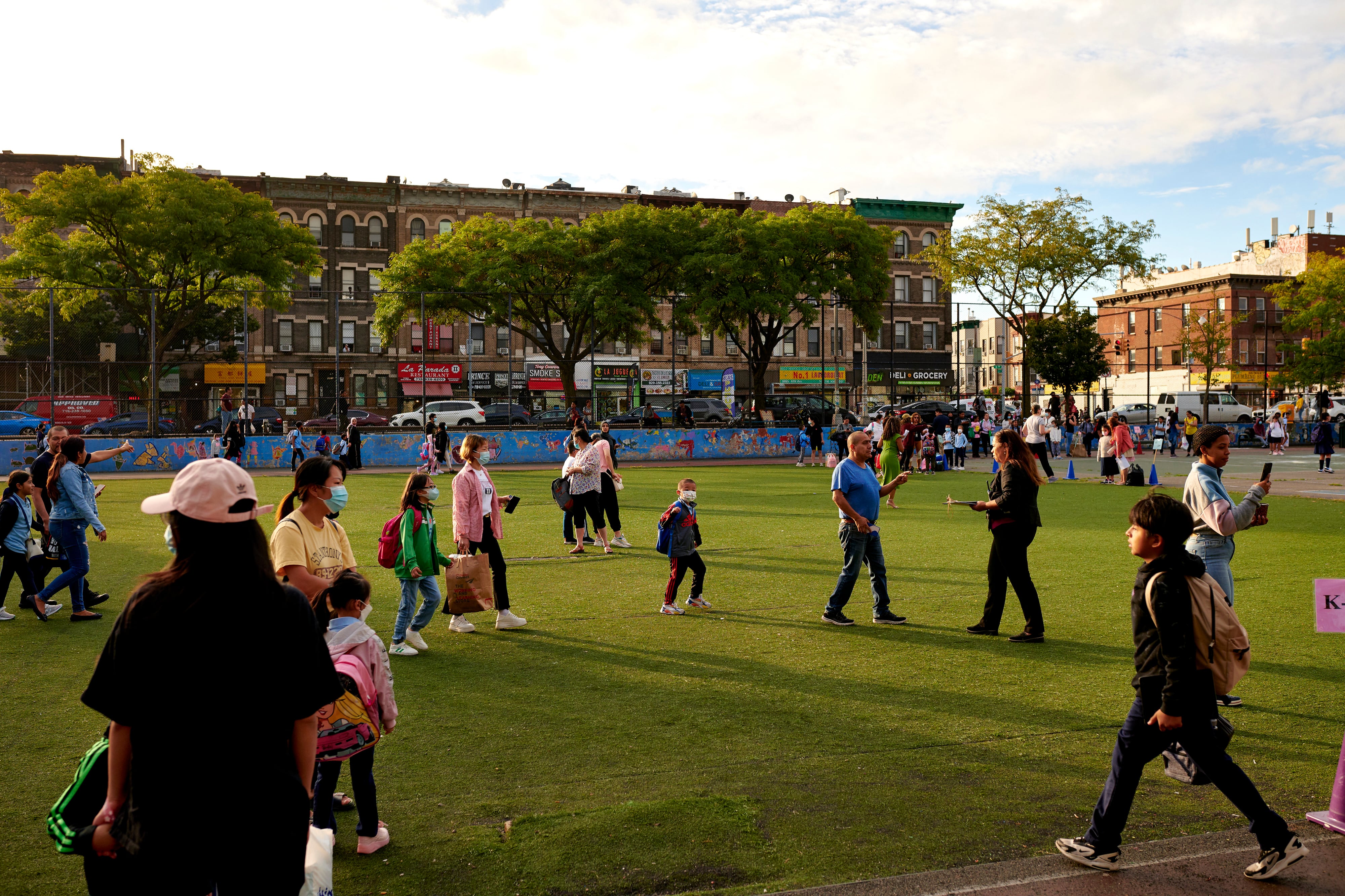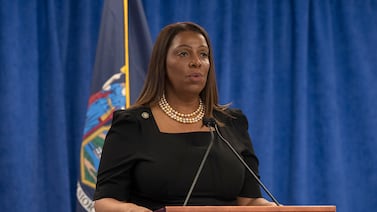Are you greeted warmly when you visit your child’s school? Does your child feel safe at school? Is your child’s school kept clean?
These are some of the questions New York City’s education department asks parents on its annual survey.
The responses provide a portrait of a school’s climate and how children are faring beyond test scores. They give school leaders insight on what improvements to make. They’re useful for families researching new schools or advocating for changes at their current ones.
But the surveys’ value relies on participation, and since the pandemic, response rates have plummeted, though are creeping back up. All parents and teachers are invited to fill out the surveys, as well as students in grades 6-12. Last year, the city received 882,500 responses, representing about 53% of students, staffers, and parents. That was down from 66% in 2019, according to education department data.
Officials declined to release preliminary response figures for this year, but they recently extended the survey deadline to April 20 in hopes of getting more input from school community members.
“We need their voices to guide us in how we rebuild trust, ensure our public schools are destinations of choice for high-quality education, and a beacon for families,” schools Chancellor David Banks said in a statement. “We want to hear from everyone.”
The annual survey, now in its 17th year, is a massive undertaking. At one point, the survey was second to only the U.S. Census in size. The city, however, can no longer confirm whether that’s accurate, a spokesperson said.
City officials will share survey results with schools this summer to help plan for the upcoming school year. They will also release the results publicly later in the year.
Here’s what else you need to know about the school surveys:
How can a parent or caregiver fill out a survey?
Families can take the survey online at NYCSchoolSurvey.org, using their child’s nine-digit student identification number. (A child’s school can help families who need support locating the number.) The online survey is available in 10 languages.
Additionally, schools typically send a hard copy of the survey home with kids.
Parents must fill out separate surveys for each child. All responses are confidential. Schools do not see an individual’s responses, rather the results are combined with other families.
Some of the questions changed this year. Why?
The education department updated this year’s survey, streamlining some of the questions to make the process more user-friendly and to better “align” the questions with the department’s priorities, officials said.
Two notable new questions ask families whether they feel their child is progressing in reading and math.
These questions could be helpful to give the education department a sense of how families feel about academic progress before and after a planned roll out of a reading curriculum mandate for elementary school and a high school algebra curriculum, said Laura Zingmond, senior editor at InsideSchools.
Her organization, which posts nuanced reviews of schools across the city, incorporates some of the city’s survey data on its site. Changing the survey from year-to-year can make it harder to compare how things are evolving (or not) at particular schools, Zingmond said. But she understood that new administrations often want to tweak things when they start.
Another new question asks families if they’re satisfied with school meal options — a priority for Mayor Eric Adams, who brought “vegan Fridays” to cafeterias. It also now asks whether parents feel comfortable going to their superintendent with questions. One of the administration’s significant early moves expanded the role of superintendents.
How does the education department use survey responses?
The department relies on the responses for each school’s “quality report” posted online. Schools often urge their families to fill out the surveys, hoping that respondents aren’t just those with the most complaints or even those who are most satisfied — as often happens on review sites.
Schools shouldn’t be “too surprised” about anything on the survey, and parents shouldn’t be waiting until the spring to voice their concerns, Zingmond said.
Typically, however, many of the responses are overwhelmingly positive, with little variation from school-to-school. The questions that tend to have the widest range of viewpoints are the ones that InsideSchools often uses on its website reviews.
More recently, the education department has begun sharing data looking at the experiences of different groups — looking at student surveys broken down by gender, race, language status, or disability — which is helpful in understanding possible inequities within schools, according to a December 2021 report from New York University’s Research Alliance for New York City Schools. Within schools, for instance, Black students reported feeling less trust in their teachers than others, and boys generally reporting slightly lower student-teacher trust than girls.
How can the surveys help schools and families?
Studies suggest that positive school climates are critical to student success and generally make schools more joyful places to work. So, measuring these aspects of a school’s culture provides helpful tools for schools and families.
Perceptions of safety, feelings of belonging, trusting adults in the building, camaraderie among students — these are “super important factors” that create environments where students can “thrive,” said Cheri Fancsali, of NYU’s Research Alliance, which helped the education department on this year’s survey changes.
“Schools are not islands. There’s the larger ecosystem to think about,” she said. “We’re seeing more acknowledgment of these other factors that come into play.”
How can schools and families better use the survey results?
The education department encourages school leadership teams to use the results in drawing up their plans for the coming school year, and provides a guide to help schools have discussions about the data with different members of their community.
Zingmond, of InsideSchools, believes that parent teacher associations should hold at least one meeting a year to go through the surveys.
“It should be a point of pride for us New Yorkers that we really do want input, particularly at this point in time when there are so many municipalities that are filtering information,” said Zingmond. “It’s one of the best ways to inform school leaders, educators, and families what’s working and what’s not working in your school.”
Amy Zimmer is the bureau chief for Chalkbeat New York. Contact Amy at azimmer@chalkbeat.org.






